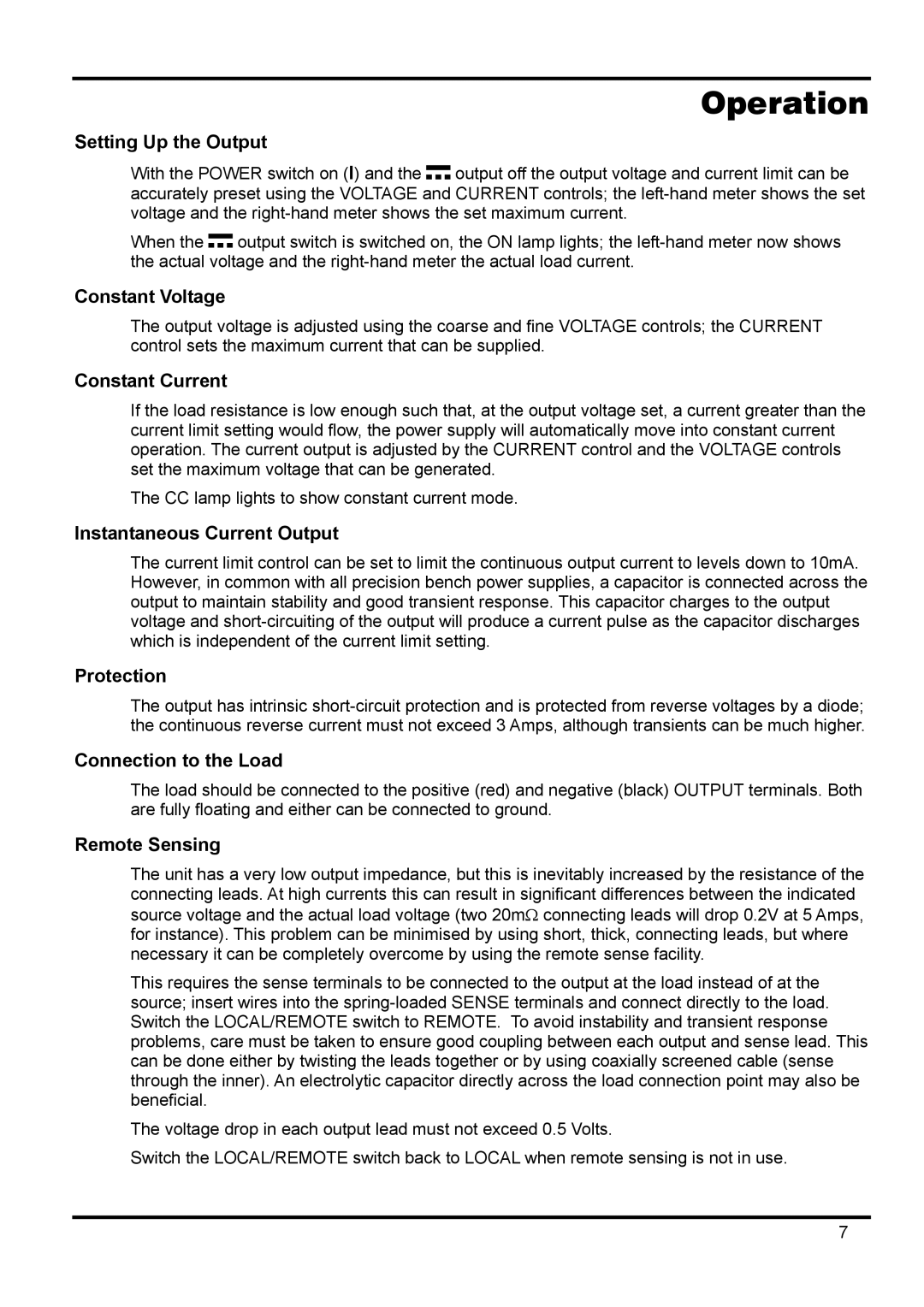
Operation
Setting Up the Output
With the POWER switch on (l) and the ![]()
![]()
![]() output off the output voltage and current limit can be accurately preset using the VOLTAGE and CURRENT controls; the
output off the output voltage and current limit can be accurately preset using the VOLTAGE and CURRENT controls; the
When the ![]() output switch is switched on, the ON lamp lights; the
output switch is switched on, the ON lamp lights; the
Constant Voltage
The output voltage is adjusted using the coarse and fine VOLTAGE controls; the CURRENT control sets the maximum current that can be supplied.
Constant Current
If the load resistance is low enough such that, at the output voltage set, a current greater than the current limit setting would flow, the power supply will automatically move into constant current operation. The current output is adjusted by the CURRENT control and the VOLTAGE controls set the maximum voltage that can be generated.
The CC lamp lights to show constant current mode.
Instantaneous Current Output
The current limit control can be set to limit the continuous output current to levels down to 10mA. However, in common with all precision bench power supplies, a capacitor is connected across the output to maintain stability and good transient response. This capacitor charges to the output voltage and
Protection
The output has intrinsic
Connection to the Load
The load should be connected to the positive (red) and negative (black) OUTPUT terminals. Both are fully floating and either can be connected to ground.
Remote Sensing
The unit has a very low output impedance, but this is inevitably increased by the resistance of the connecting leads. At high currents this can result in significant differences between the indicated source voltage and the actual load voltage (two 20mΩ connecting leads will drop 0.2V at 5 Amps, for instance). This problem can be minimised by using short, thick, connecting leads, but where necessary it can be completely overcome by using the remote sense facility.
This requires the sense terminals to be connected to the output at the load instead of at the source; insert wires into the
The voltage drop in each output lead must not exceed 0.5 Volts.
Switch the LOCAL/REMOTE switch back to LOCAL when remote sensing is not in use.
7
